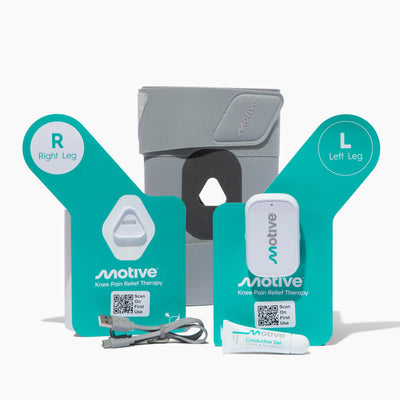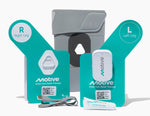
Did you know according to a World Health Organization (WHO) Report around 528 million people globally were found to be suffering from osteoarthritis in 2019?
Arthritis is a painful and inflammatory condition of the joints. The disease makes it challenging for people to stay active and perform their daily activities, such as climbing stairs, performing chores, or standing for a long period of time, which worsens the arthritis pain. The joints most commonly affected by arthritis include the feet, hands, hips, and lower back. The disease can be observed in people of any age group or gender.
Based on the affected area and condition, there are different types of arthritis:
- Juvenile arthritis (JA): The disease affects children of age 16 or younger. In this condition, the immune system itself attacks tissues around the joint.
- Rheumatoid arthritis: In this condition, the immune system targets and attacks the synovial membranes within the joints
- Osteoarthritis: This is the result of wear and tear of joint cartilage (or cartilage damage) due to repetitive stress or overuse of the knee.
- Gout: It is a condition where uric acid crystals accumulate in the joints, leading to intense pain and inflammation.
Among many, the most common form of arthritis is osteoarthritis. It is a disease that affects the joints. The diseased person suffers from chronic joint pain, stiffness, and swelling in their joints. Knee arthritis is the most common type of osteoarthritis. It affects knee joints and impacts people’s ability to move, walk, or run freely and comfortably—affecting their quality of life.
Motive therapy can be a revolutionary solution to any type of knee joint that results either due to knee injury, arthritic pain, or after knee surgery. It doesn't merely offer a temporary remedy for your knee ailment; when used as directed, it can offer enduring relief from knee pain.
In this article, we will understand in depth about arthritic knee pain, its causes, available treatment options, and MOTIVE Therapy's role in providing lasting knee pain relief.
Understanding Arthritic Knee Pain
The knee, the largest and strongest joint within our body, comprises three different bone types.
- Tibia (shinbone)
- Femur (thighbone)
- Patella (kneecap)
The ends of all three bones are covered with articular cartilage that acts as a cushion for easy knee movement. The meniscus, present between the thigh bone and shinbone acts as a shock absorber and provides stability to knee joints. The friction between joints is reduced due to the presence of a synovial membrane that offers lubrication for easy joint mobility.
Problems in any of the parts of the knee result in pain and can affect your daily life.
Types of Knee Arthritis
It is crucial to identify the underlying cause of knee issues for healthcare specialists to devise appropriate treatment plans. The arthritis of the knee is of the following types:
- Knee Osteoarthritis: In this condition, the cartilage of the knee joint continuously deteriorates and becomes rough and frayed. This reduces the protective space between the bones and causes rubbing of two bones, producing painful bone spurs. The risk factors of osteoarthritis of the knee include infections, knee injury, or being overweight.

Figure: An illustration of a healthy and osteoarthritic knee.
The treatment of the knee begins with a medical history physical examination followed by X-ray and MRI scans to understand the condition. Often, blood tests are conducted to eliminate alternative causes of knee pain conditions like rheumatoid arthritis.
Currently, available treatments for osteoarthritis (surgical and nonsurgical treatments) given based on the level of the condition include:
- Muscle strengthening
- Physical therapy (need to consult with a physical therapist for the type of movement and exercise done)
- Bracing
- Weight loss
- Hyaluronic acid or corticosteroid injection
- Anti-inflammatory medications or over-the-counter drugs (nonsteroidal anti-inflammatory drugs (NSAIDs), such as ibuprofen and acetaminophen)
- Glucosamine and chondroitin supplements
- Surgical treatments, such as osteotomy, total knee replacement, arthroscopy, or arthroplasty.
- Rheumatoid arthritis: It’s an autoimmune disease that affects multiple joints, including the knee joint. In this condition, our immune system attacks cartilage and ligament tissues, softening the bone. The synovial membrane covering knee joints starts to swell which creates chronic painful and stiff knee conditions.
The disease can be diagnosed using blood tests, physical examination, and imaging tests that provide insight into the medical history, cause of the problem, and change in the size and shape of joints and joint spaces.
The treatment options available for rheumatoid arthritis are:
- Exercise and dietary changes
- Muscle strengthening
- Use of topical analgesic medications, such as OTC diclofenac topical gel
- Corticosteroid injection
- Use of nonsteroidal anti-inflammatory drugs (NSAIDs), such as ibuprofen (Advil)
- Surgical options include synovectomy, osteotomy, and knee joint replacement
- Posttraumatic arthritis: The condition results after a knee injury, such as a meniscus tear and anterior cruciate ligament (ACL). It results in pain, swelling, and stiffness in knee joints.
The cause of the problem is detected by using imaging techniques, such as X-ray, CT Scan, and MRI. The treatment options available for the knee problem due to posttraumatic arthritis are as follows:
- Wearing knee braces
- Muscle strengthening
- Physical therapy
- Weight loss
- Arthroplasty (joint replacement)
- Arthrodesis (Joint fusion)
Knee pain due to any of the above-given conditions reduces the quality of life. Stiffness and knee pain can make it challenging for the affected person to perform simple tasks like bending, taking short walks, or engaging in light activities. It restricts the range of motion in your knee, preventing you from doing squats, climbing stairs, entering or exiting your car, sitting in a chair, or engaging in your routine daily activities.
The Motive Difference
While various knee pain treatment options are accessible in the market, many of these devices and medications typically provide only short-term relief. Once you stop treatment, you may experience a recurrence of the same issue.
However, when you choose Motive therapy, you can expect lasting knee pain relief.
Motive utilizes muscle stimulation to enhance the strength of the major muscle groups around your knee joint. It causes muscle contraction through stimulation that strengthens the quadriceps muscle, de-stresses your joints, and provides long-lasting pain relief. The device helps improve the quality of your life by treating the root cause of the problem: muscle weakness.
Motive is the only FDA-cleared treatment targeted at knee pain's underlying causes. Further, it is supported by physicians due to its drug-free and non-invasive approach.
The Convenience of Motive
Motive therapy is an at-home and easy-to-use device. With the MyMotive App, you can take control of targeted stimulation therapy and adjust therapy intensities to fit your condition in the comfort of your home.
The app will regularly ask for pain and mobility ratings, showing your progress over time as you complete therapy and surveys. You'll also receive weekly and monthly insights on your therapy progress, pain improvement, and step count comparisons.
What sets Motive apart is its accessibility as an over-the-counter treatment (NO prescription required), ensuring that every patient can readily access knee pain relief and improve their quality of life.
Motive is Your Personal Journey to Knee Health
Arthritic knee pain is one of the most common joint problems people face worldwide. It either occurs due to previous medical conditions, overuse of the knee, or autoimmune disorders. The problem causes severe knee pain and physical disability in patients, such as the inability to walk, climb stairs, sit in a chair, or squat—overall affecting their quality of life.
Regardless of the treatment choice, whether it involves knee braces, medications, or therapeutic devices, these methods generally provide temporary relief from knee pain, as they do not address the underlying cause: muscle weakness.
Motive therapy represents a groundbreaking approach to achieving lasting relief from arthritic knee pain, enabling you to resume regular activities with ease. It effectively strengthens your thigh muscles, enhancing leg flexibility and movement.
This device is readily available over the counter without the need for a prescription. If you're eager to regain your mobility and reclaim your life, Motive therapy is the choice for you. It is both FDA-cleared and endorsed by physicians as a reliable knee pain solution.
For further insights into how Motive therapy works or any additional information you require, please explore here.





